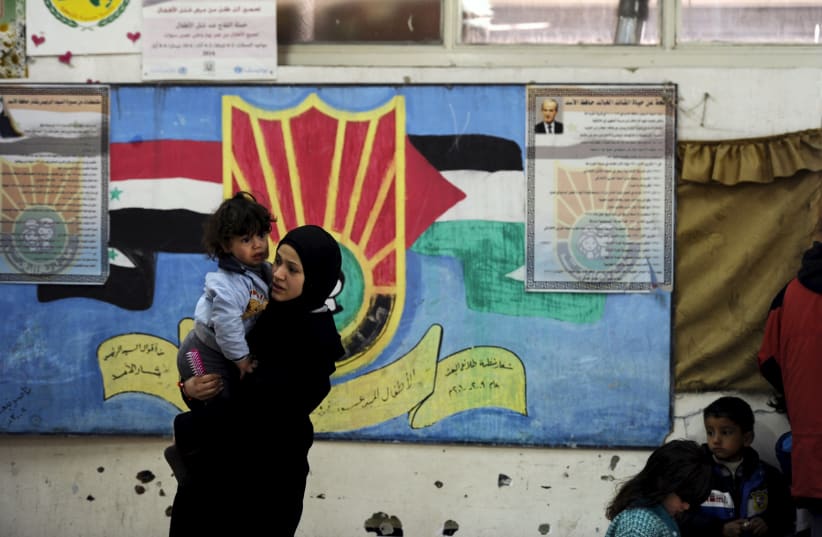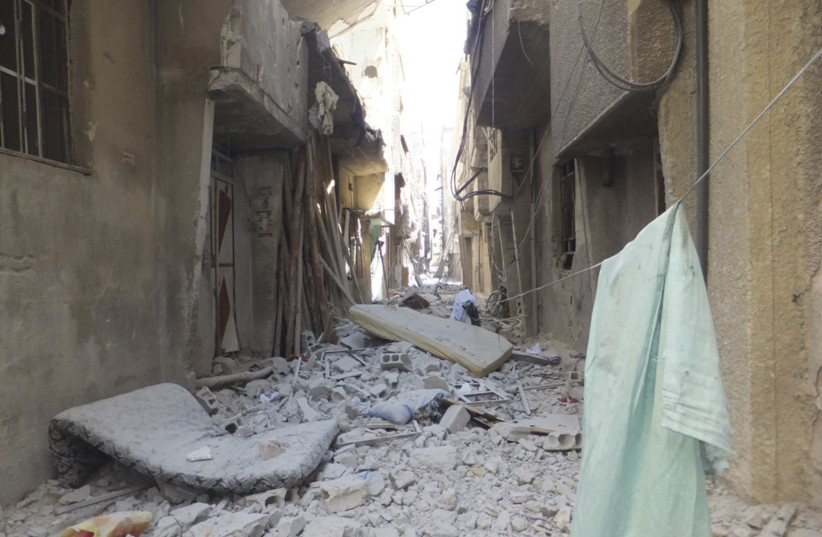Palestinians were among the 41 victims of a massacre conducted by Syria's military intelligence service in the Tadamon neighborhood of Damascus in April 2013, according to The Guardian.
The Guardian first published images of the massacre in late April showing members of Branch 227 of Syrian President Bashar al-Assad's military intelligence service murdering dozens of civilians.
The footage was smuggled out of Syria by a member of a loyalist Syrian militia member who said he was horrified by the video he was shown. Members of Branch 227 forced civilians to run toward a mass grave while shooting at them. Some of the civilians were told they were running from a nearby sniper, while others were mocked and abused as they were forced towards the grave.
The soldiers proceeded to pour fuel on the mass grave and ignite it, laughing as the fire burned the bodies, according to The Guardian.
Tadamon, the neighborhood where the massacre happened, was a battlefront between the Assad regime and insurrectionists, but the civilians murdered in the massacre were seemingly Syrian loyalists who were killed in order to threaten local residents against joining the insurrectionists, Annsar Shahhoud and Prof Uğur Ümit Üngör from the University of Amsterdam’s Holocaust and Genocide Center told The Guardian.
After obtaining the footage of the massacre, Shahhoud and Üngör created a fake Facebook account under the alias "Anna Sh" in order to speak with the soldiers who carried out the massacre and other war crimes, according to the report.
For two years, Shahhoud spoke with members of the Assad regime's security forces, getting them to share their stories and crimes, The Guardian added.
Last year, the two researchers finally managed to get in contact with one of the gunmen seen in the video of the Tadamon massacre, after speaking with over 500 regime soldiers. The researchers were able to confirm that the gunman, identified as Amgd Youssuf, was a major in branch 227.
Shahhoud spoke with Youssuf over video call multiple times over the summer, speaking about his experiences, including a brother he lost shortly before carrying out the Tadamon massacre. "I killed a lot,” the major told the researchers about the massacre. “I took revenge.”
The major proceeded to condemn the National Defense Front militia which had also taken part in the massacre, saying they were "thugs and killers" and he was not like them, before finally admitting his role and saying "I'm proud of what I did." Youssuf proceeded to threaten Shahhoud and her family and has tried to reach out to the researchers multiple times since that conversation.
"They know who killed their loved ones"
“The locals blame the regime,” Uğur told The guardian about the massacre. “They know who killed their loved ones. They were killed as a warning not to consider crossing sides. Their families deserve justice.”
Since the report was published, family members of the victims have approached The Guardian and identified six of the victims, many of whom were Palestinians from the nearby Yarmouk refugee camp.
Izz al-Din al-Ali, an activist in the Tadamon neighborhood, told Al-Araby Al-Jadeed that the massacre shown in the footage published by The Guardian was not the only one in the neighborhood. He added that in one case in 2014, he documented the presence of about 50 bodies that were left unburied, of which 15 were burned. More corpses were found in other areas.
A Palestinian activist told the newspaper that he believes that many of the victims killed in Tadamon in 2013 were Palestinian refugees, as the massacres were mainly carried out by checkpoints at the entrances of the Palestinian refugee camp in the area.
The mother of Wasim Siyam, a Palestinian refugee who was murdered in the massacre, told al-Araby that “I thought he was held by the regime. He left the house at 6 a.m. I gave him his clothes, I had them hanging to dry, he wore them and I told him: please don’t go. At 12.40 his phone dropped off the cell network. We asked the government for a family record and they had him down as alive. Justice must be served.”
After the report by The Guardian was published, the Assad regime announced the release of a few thousand detainees, although only 14 Palestinians were among those released. Nearly 1,800 Palestinians are being detained in Syria and 332 are missing in the country, according to the Action Group for Palestinians of Syria.

